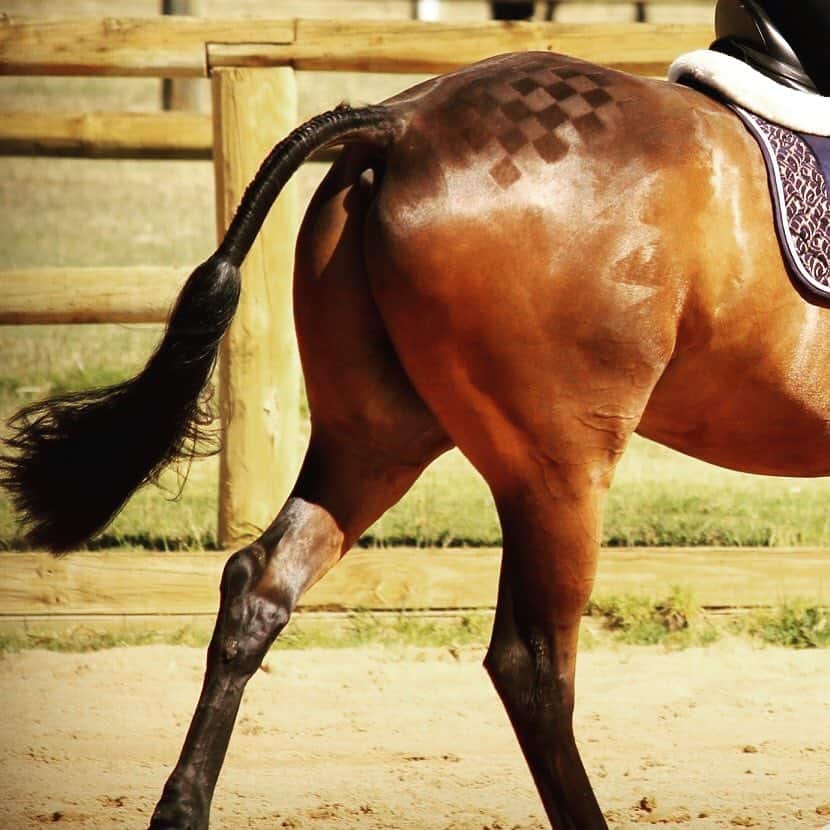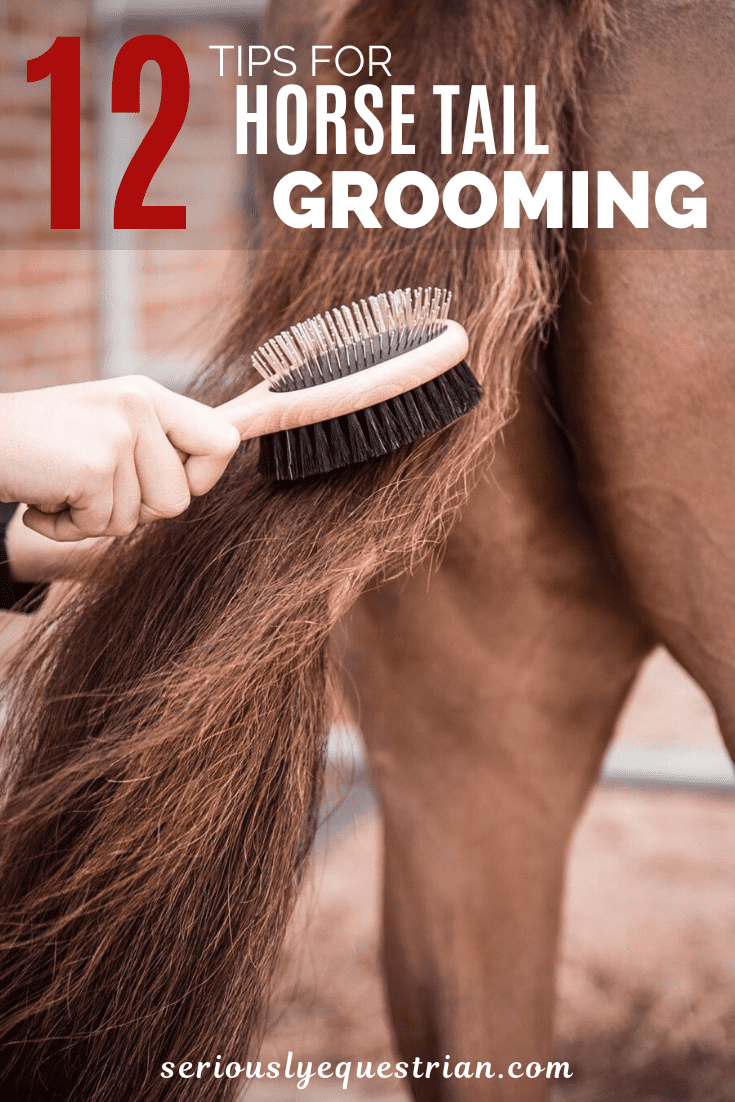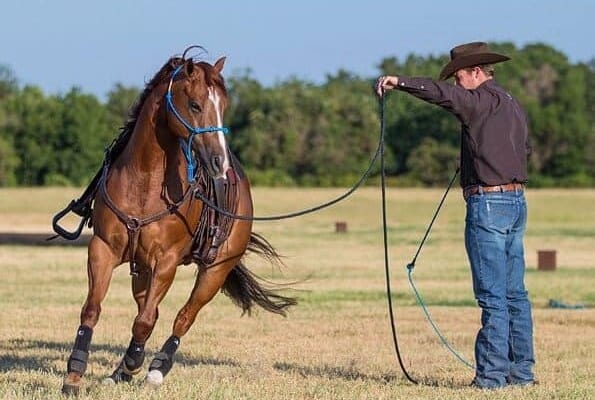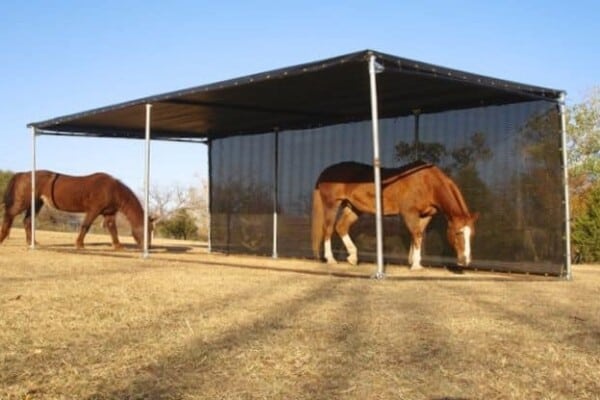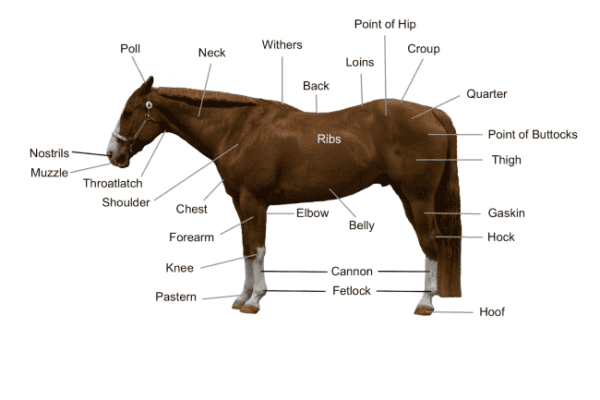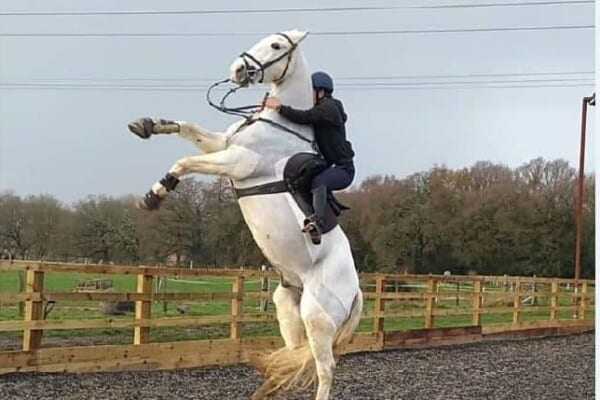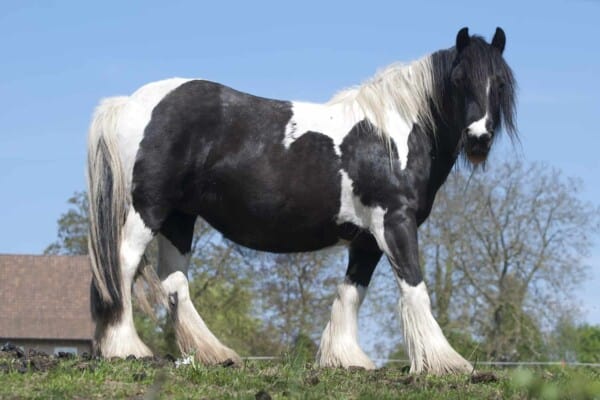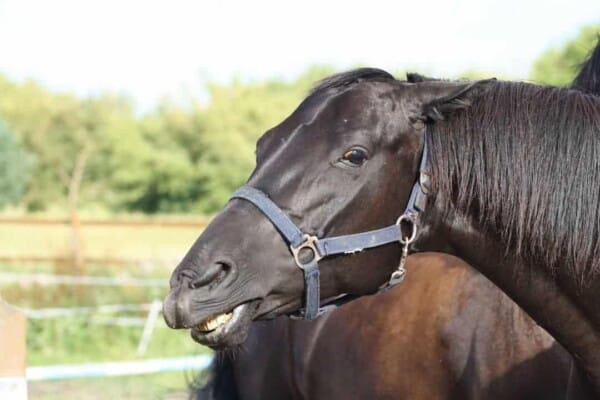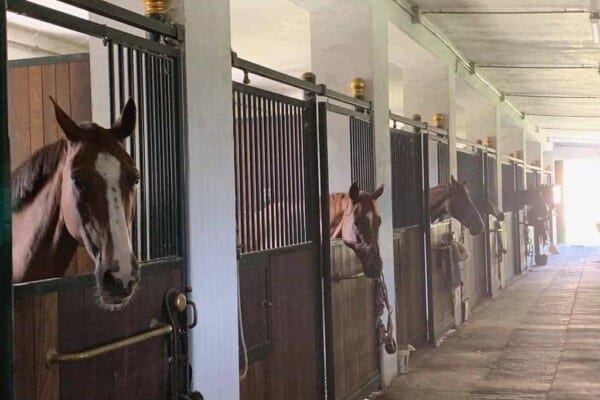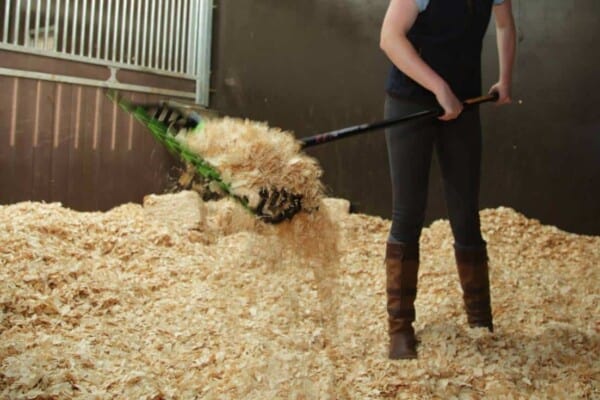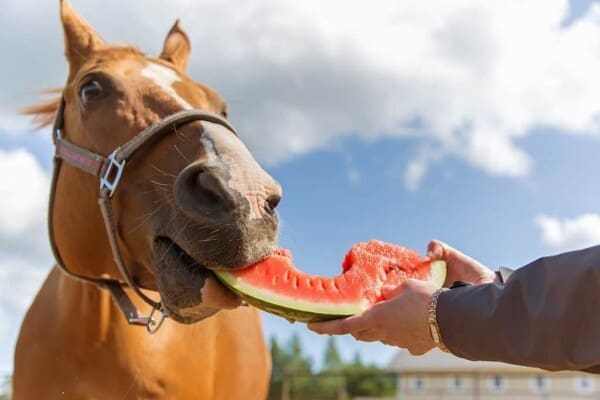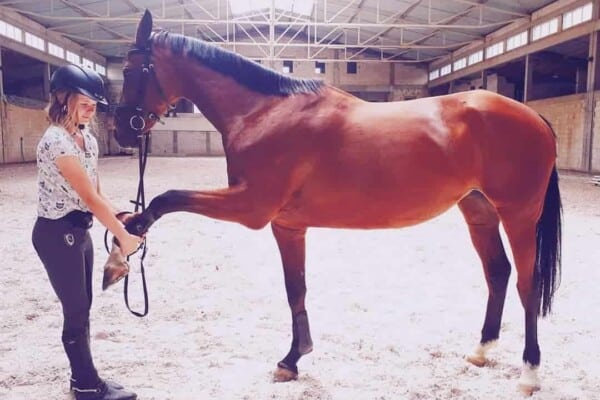There is nothing like a horse with a beautifully clean and brushed tail. You might be lucky and your horse has a dark colored tail – bay, black or chestnut – it’s double the work if you have a grey! Some of our tips will be specifically aimed at grey horses but read on to find out how you can keep your horse’s tail looking tip-top.
The tail is very important to the horse, it registers mood and reaction alongside other parts of the horse’s body and it keeps flies away in the summer months. Looking after tails and manes is all part of good horse care and should form part of your daily grooming routine.
- Brush carefully – if you use a stiff brush on the horse’s tail then you will end up breaking the hair particularly if it is tangled. Always use a soft brush either a body brush or a broad human hairbrush.
- Section the hair – separate the tail into sections a bit like if you are brushing long human hair, shake a section free and then work through it systematically with a soft brush.
- Untangle the hair regularly– spray on some mane and tail condition first which will make the hair slippery and easier to brush. If it is very tangled, then you will need to pick out the knots first.
- Finger comb – if the tail is just impossible to brush then finger comb it through section by section using spray conditioner to help you remove the tangles and minimize breakages.
- Plait when in Muddy conditions – if you are hunting or hacking in wet and muddy conditions, it is sensible to plait and tie up the horse’s tail in order to keep it clean. It also stops the tail from getting caught on branches and low undergrowth. This is a good technique to use for a white tail in the winter months when you turn out in the field, it’s not as if the horse will be needing his tail to brush away flies.
- Muddy tails – there are two options with muddy tails, either wait until the tail is dry and first finger comb before brushing through in sections or, you can wash the tail and then section out the wet hair. If the tail is just muddy then this will work well but if it is tangled then the water won’t help remove knots and you are better off waiting until the tail is dry to do that.
- Wash Regularly – this is even more important with a lighter tail. The trick with white tails is to never let them become too dirty. Wash them once or twice a week otherwise the staining builds up and you may end up with a yellow tail which will take a lot of work to bring back to its original color.
- Use Whitening shampoos – there are lots of products for horses with white tails but you should expect to wash a white tail probably twice as much as a dark-colored tail. Try and always keep the tail as clean as possible as it minimizes the staining. If you do need to wash the tail several times, start with a standard shampoo until you start to find the true tail color. You don’t need to use an expensive showing product at this stage. Once the tail is clean, use a whitening or silver/purple shampoo to really restore the color. These shampoos work on the same principle as the shampoos elderly ladies use in the hairdresser. White hair that has been around for a while will naturally yellow and most old ladies don’t even roll around in mud or grass either! A proprietary shampoo will restore the white and depending on how much you use, you can also streak the tail through with silver which looks lovely with a dapple or dark grey coat.
- Minimize brushing for thin tails – over brushing thin tails can reduce the hair content even more. Finger comb daily with a little baby oil or tail conditioner and wash once or twice a week to keep clean. Minimize brushing and only ever use a soft brush.
- Tie up Thick tails – horses which naturally have very long, thick tails or which are shown with large tails such as the native breeds and traditional cobs do require a lot of effort to keep the tail looking it’s best. Tie the tail up or keep it shorter in the winter months which will minimize your work. Plaiting and folding up a long tail means you can keep the tail nature intended but it is kept out of the way when the horse is in the field or being ridden, reducing tangles and dirt.
- Protect the tail when travelling– all horses will get some degree of staining to their hind legs and tails when they travel because they don’t usually have as much space to lift their tail and pass droppings when on a truck or trailer. Protect the top of the tail with a tail bandage which should not be left on for more than four hours. Pop a tail guard over the top as many horses will lean on the wall or bar of the transport and can rub the top of their tails. To keep the rest of the tail clean, you can use a long plait or plait it and tie it up.
- Tail bags – these are long, narrow plastic bags like a sleeve which are designed to totally cover the horse’s tail. If it is a long, full tail then you will probably have to plait it first. Your horse will need to get used to these as they will make a noise when he moves his tail and will also make a noise when he is travelling so introduce them slowly and carefully in the stable environment at home before you travel your horse to an event.
Most owners’ tail routine will be dictated by the type of tail their horse has and also what they do with their horse. Always allow the horse freedom to have his full tail in the summer months as not being able to flick away the flies will cause a lot of distress. This applies just as much when you are out at events as when you are at home.

